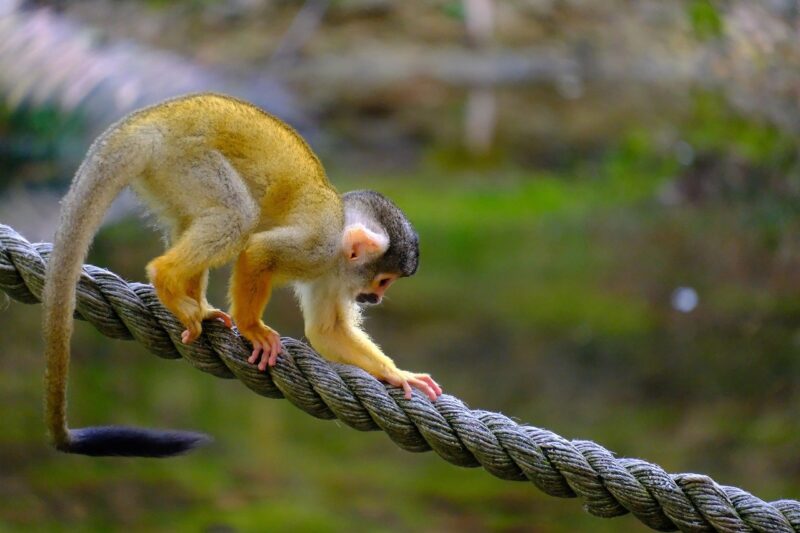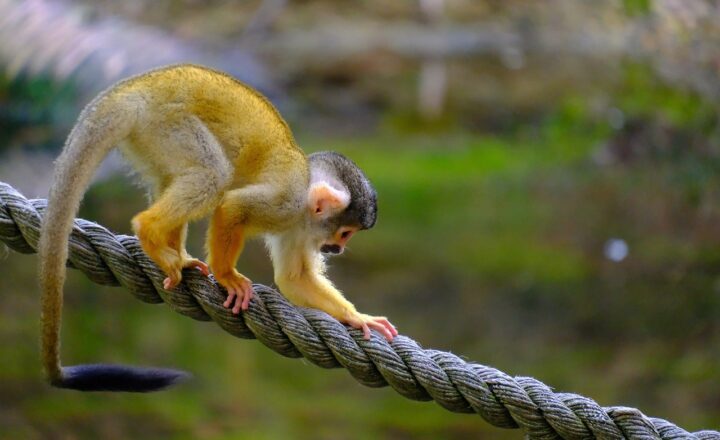The Social Life of Monkeys: How Early Primates Formed Complex Social Bonds
November 14, 2024

Monkeys are often perceived as quirky creatures, swinging through trees and displaying playful antics. However, beneath their playful exteriors lies a sophisticated social structure that has fascinated scientists for decades. In this article, we’ll explore the intricate social lives of monkeys, examining how these early primates formed complex social bonds that are crucial for their survival and well-being.
1. Understanding Monkey Social Structures
From their hierarchical clans to their nurturing families, monkeys exhibit social structures that are crucial for their interaction and cooperation within groups. Their social dynamics play a vital role in resource allocation, reproduction, and protection against predators. Monkey societies can vary significantly but typically fall into two main categories: matriarchal and patriarchal systems.
Matriarchal Societies
In species like the bonobo, females hold dominant roles within the group, establishing cooperative bonds that challenge traditional power dynamics seen in other primate species. This matriarchal organization leads to better cooperation among mothers and offspring, fostering strong nurturing relationships.
Patriarchal Societies
In contrast, many macaque species operate under patriarchal frameworks, where males often vie for alpha status. The alpha male plays a pivotal role in leading the group, mating rights, and protecting their territory. Despite this competition, grooming habits among monkeys often fortify alliances and reduce tensions, helping to maintain group cohesion.
2. Building Social Bonds: Grooming and Its Importance
Grooming is a significant aspect of monkey social life, transcending mere hygiene. This behavior serves multiple functions that strengthen bonds among individuals:
– Reinforcement of Relationships: Grooming builds and maintains friendships. By spending time grooming each other, monkeys strengthen their social ties and enhance trust within their communities.
– Conflict Resolution: Grooming helps to ease tensions and resolve conflicts, promoting peace and stability within groups. After a dispute, initiating grooming can be a way for individuals to reconcile and restore relationships.
– Social Currency: In some species, grooming acts as a form of social currency, where individuals leverage these interactions for future favors or support in competitive situations.
These grooming habits are not just about removing dirt and parasites; they represent a crucial social strategy that helps maintain a healthy, interconnected society.
3. The Role of Communication in Monkey Societies
Communication is vital for maintaining social dynamics and relationships in monkey societies. It takes many forms, from vocalizations to body language:
– Vocalizations: Each species of monkey has its own repertoire of sounds serving a variety of functions, including alerts to potential threats and maintaining group cohesion. For example, alarm calls warn other members of the group about predators, while softer calls may signal comfort or play.
– Body Language: Monkeys utilize postures and facial expressions to convey emotions. Signs of submission, aggression, or affection are communicated through various physical cues, allowing them to navigate their social landscapes effectively.
– Facial Expressions: Certain monkeys, like the macaques, have an extensive range of facial expressions that represent different emotions, adding another layer of communication.
Through these communication tools, monkeys maintain intricate social networks and navigate the complexities of their interactions.
4. Cooperation and Altruism Among Monkeys
One of the most striking aspects of monkey behavior is their capacity for altruism and cooperation. This includes behaviors that seem to prioritize the welfare of others, demonstrating higher cognitive functions:
– Food Sharing: In some species, monkeys share food with others, especially when caring for young. This behavior promotes community welfare and strengthens social bonds.
– Alloparenting: Monkeys often engage in alloparenting, where individuals other than the biological parents help care for and protect the young. This not only supports the offspring but also reinforces social cohesion among group members.
– Teamwork: During foraging, many species display advanced cooperative strategies, working together to locate and retrieve food. This cooperation maximizes resource acquisition and enhances survival chances.
These altruistic behaviors underscore the complex social lives of monkeys, revealing that their relationships are built on more than just instinctual reactions; they exhibit true social intelligence.
5. The Impact of Environment on Social Structures
The environment significantly influences the social structures and dynamics of monkey species:
– Resource Abundance: In areas with abundant resources, monkeys often form larger groups, leading to more intricate social networks. In contrast, in resource-scarce environments, smaller, more intimate groups may develop, fostering deeper social connections.
– Habitat Complexity: Forests provide ample opportunities for diverse social interactions and alliances. As monkeys navigate through complex terrains, their social relationships can adapt to better suit environmental challenges.
– Predation Pressure: In areas with higher predation risks, monkeys may develop tighter, more cohesive social units to enhance their protective strategies.
Understanding how environmental factors shape monkey behavior provides crucial insights into their adaptability and evolutionary strategies.
6. Conclusion: The Legacy of Monkey Social Life
The social lives of monkeys reflect a fascinating blend of complex behaviors, intricate social structures, and connectivity that are vital for their survival. Through grooming, vocal communication, cooperation, and altruism, monkeys have mastered the art of forming and maintaining social bonds.
As we continue to delve deeper into these remarkable creatures, we uncover the threads that connect us to our primate relatives and gain a greater understanding of our own social constructs. The study of monkeys offers valuable lessons about the importance of community, cooperation, and the intricate networks that define social life, enriching our appreciation for the complexities of both animal and human societies.
As we navigate our social environments, perhaps we can take a cue from these graceful primates—nurturing our social bonds and fostering cooperation, ensuring our communities thrive.








